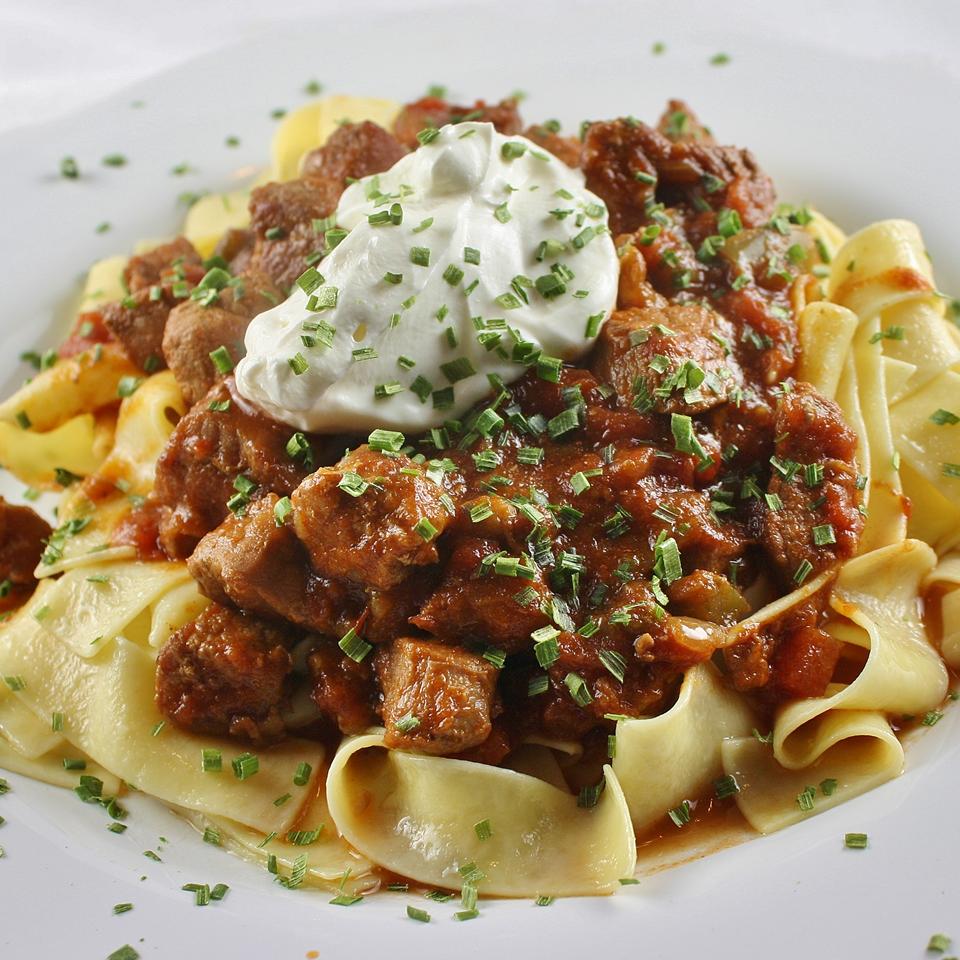Porkolt (Hungarian Stew) Made With Pork

A flavorful stew, Pörkölt is redolent with the fragrance of paprika and bell peppers. It has few ingredients, and is surprisingly easy to make. Save time by using boneless pork chops and cubing them after they are browned. There should be enough salt in the canned tomatoes to season the stew, but if not, add more to your taste. Use best-quality, real Hungarian paprika for best results. We prefer to serve it with noodles, but galuska (Hungarian dumplings) or rice are good, too.
INGRIDIENT
DIRECTION
Step: 1
Place the bacon in a large, deep skillet, and cook over medium-high heat until evenly browned, about 10 minutes. Drain, and reserve the drippings. Add the onions to the bacon and cook together until the onion is translucent. Remove skillet from heat and stir the paprika, garlic powder, and pepper into the bacon mixture. Transfer the mixture into a large stockpot.
Step: 2
Heat a small amount of the reserved bacon drippings in the skillet again over medium-high heat. Cook the pork chops in batches in the hot drippings until evenly browned on both sides. Use additional bacon drippings for each batch as needed. Remove the pork chops to a cutting board and blot excess fat off the surface of the chops with a paper towel; cut into bite-sized cubes and stir into the bacon mixture.
Step: 3
Heat a small amount of the bacon drippings in the skillet; cook and stir the bell pepper in the hot drippings until softened and fragrant; drain on a plate lined with paper towels. Stir the cooked pepper into the bacon mixture.
Step: 4
Pour the tomatoes with liquid and beef broth into a stockpot and place the pot over medium-high heat. Bring to a simmer and reduce heat to medium-low. Cook until the stew begins to thicken, stirring occasionally, about 90 minutes. Stir the sour cream into the stew just before serving.
Step: 5
Bring a pot with lightly-salted water and bring to a rolling boil; add the egg noodles to the water and return to a boil. Cook uncovered, stirring occasionally, until the pasta has cooked through, but is still firm to the bite, about 5 minutes. Drain well in a colander set in the sink. Ladle the stew over the drained noodles to serve.
NUTRITION FACT
Per Serving: 323 calories; protein 26.9g; carbohydrates 22.9g; fat 13.2g; cholesterol 86.4mg; sodium 348.7mg.
The name of “stew” can process to 2 time a dish and a cooking method. Stewing involves slowly cooking piece of meat, raw fruit or beans in a tastefull liquid . It’s similar to braising, but it does have a few piece of differences. The meat is chopped into few of pieces but of being processing menu all of it , and the liquid completely covers the essential in a stew as compared to a braise’s halfway full . When meat or raw fruit are cooked using this method, the resulting dish is called stew.
Stew has a perception for being a rib-sticking eating process that warms you up on a cold , winter day. It’s true ; a bowl of classic beef stew does have warming properties , but stew’s comfort factor more than a way beyond preserving you from the chill . It’s all about those tender chunks of meat and vegetables, swimming in a thick, ultra-rich gravy. The way they come together creates the greatest comfort food, no matter the weather.





